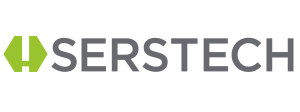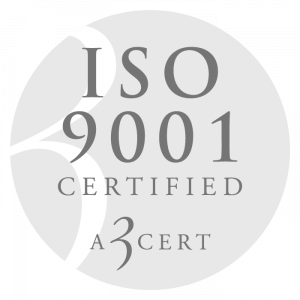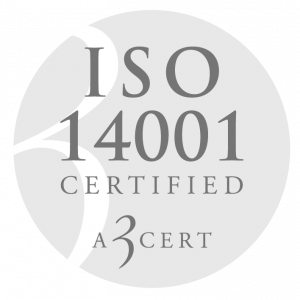FAQ for Sales Partners
Edited 7 Juni 2016
Q: What kind of services are sales partners expected to offer locally?
With back-up from Serstech, we expect you to locally do:
Comprehensive sales
Necessary technical pre-sales
Marketing (with back-up from Serstech)
Provide a web
First line technical support
Basic training
Stock
Feedback and dialogue according to our sales partner agreement is of course also expected.
Q: Can Serstech provide us with extra instruments that we can lend to customers?
No, at the moment you have to keep a stock for potential customers in your regions. However, we will investigate the costs and benefits of a Try and Buy program. More information is scheduled for later this year.
Q: What are the prices for the instrument, databases and additional services?
You find all necessary price information in your price list. The price list will be updated regularly.
Q: How will you keep track of the instruments?
The instruments have a unique ID number. You can see it in the About menu and in the DMT software.
Q: Will you sell spare parts?
Yes, we are selling both spare parts and accessories. You find them in the price list.
Q: How long will it take for our orders to be delivered to us?
If we have stock, we can ship within 2 business days. For a larger order you have to calculate with a lead time of up to four months in the worst cases. Please feel free to contact us to check stock levels in advance of major proposals. Please refer to Serstech General Terms & Conditions for further information.
Q: How will you prioritize the orders placed by different distributors?
First come, first serve.
Q: How will we communicate with Serstech?
Your main contact persons are VP Sales José Miguel Jimenez (jmj@serstech.com) and our Inside Sales Account Manager Kristin Eybert-Bérard (keb@serstech.com). Both know your situation and will channel your questions to the right persons. However, you are always welcome to talk to anybody in our team as well as our CEO Mikael Wanland (mw@serstech.com).
Q: What kind of software updates and/or hardware upgrades do you have planned currently?
In Dec 2015 we released version 3.3 which added several new features. Among them were:
• New Identify Mode – clearer user interface and improved mixture analysis
• Better matching – fewer false positives and optimized auto-exposure
• Minor improvements and bug fixes
• DMT 3.3 supporting the new features
User Manual for Indicator v3.3 is available for download to Sales Partners,as well as a guide for the new Screen Mode and DMT.
Q: How are technical upgrades and updates prioritized?
Your input is critical in prioritizing what we develop. Please let us know what your customers need!
Q: What are the “Partners” pages?
It is a password protected section of the website that is only open for our partners. Here you can find important information, sales promotion material and support documentation to drive your business. If you haven’t received login details, please contact us. It is important that you enter the partner pages regularly, since we will publish information frequently.
Q: Will there be a central forum where distributors can communicate with each other and share experiences or FAQ’s, and answer each other’s questions?
This is a good idea that Serstech is considering. To start with, we will hold webinars at regular intervals. In this forum, we all can share experiences.
Q: Will there be a clear overview of all the 8000+ substances included in the databases?
A list with the content of the databases can be sent on request. Any user can also list the substances on their Indicators via the Verify function, even if this does not provide a good overview. It is also possible to see them via DMT. Suggestions for improvements are welcome.
Q: How do I get a good measurement of dry samples like powders in polybags?
When measuring dry substances in bags, make sure you have an ample supply of material in the bag in front of the laser aperture. Also push the bag firmly to the aperture. Ideally, the plastic bag surface with contents should bulge slightly into the aperture to ensure optimal laser focus on the sample. This is very critical in order to get a good spectra, especially when measuring opaque materials.
Q: What is the maximum poly bag thickness that I can measure through?
The depth of the laser is about 1-4 mm depending on the actual materials the laser must pass through. It is always best to test the containers prior to developing a method for testing the delivered materials.
Q: Does the laser work through glass?
Yes, but please note that the glass must not be too thick. The ideal is to use the vial holder, which is designed for vials with 1 mm thickness. If you need to measure through glass, please use the 1.5mm point-and-shoot adapter (introduced as an accessory in Jan 2016 and shipping with all new instruments). If the glass is too thick to the adapter, it is also possible to remove the point-and-shoot adapter completely and analyze through a glass vessel with up to about 4 mm thickness.
Q: What is the Life expectancy?
The average life expectancy is not known, but has been calculated to be at least 5 years. Guarantees of up to three years are offered by Serstech (one standard plus two optional years). Sales partners may of course offer additional guarantees and replacement programs on their own behalf and risk. The need for and handling of repairs and refurbishments will be reviewed by Serstech during next years.
Q: Can the Instrument be used with a desktop stand?
The instrument can be attached to any standard camera tripod via the standard fittings in the front and back of the instrument.
Q: What is the difference between Screen, Identify and Verify Modes?
The purpose if the three modes are:
• Screen mode is used to see if a samples contains a restricted substance, and if it does a red screen is shown.
• You use Identify when you have unknown samples and want to see what it is.
• Verify is used when you want to confirm that a substance is what you expect it to be.
Q: Why do we not have a touch screen?
Based on a lot of end user discussions, our opinion is that a non-touch display together with our hardware buttons is the most robust and reliable solution. It handles any situations, including the common ones when the user is wearing gloves. For certain use cases there may be benefits of a touch screen and this will be considered for future instruments. Your input on this and any other matters are highly appreciated.


